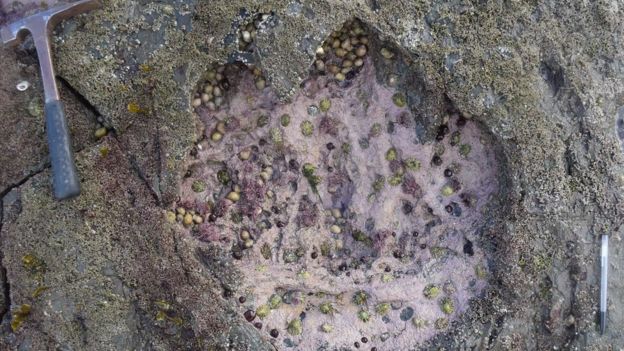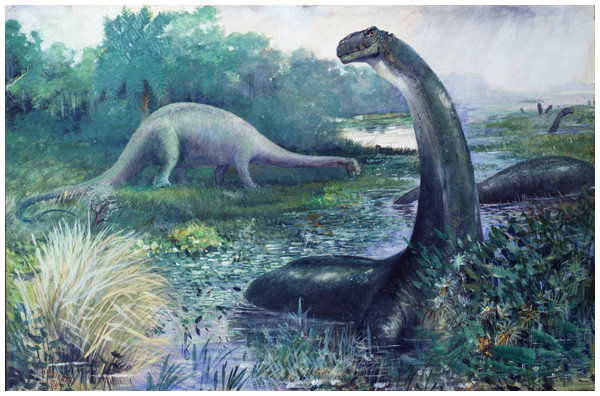Jurassic tracks found on Skye uncover secrets of Scotland's dinosaur past
Skye (Scottish Gaelic: An t-Eilean Sgitheanach) is the largest and northernmost of the major islands in the Inner Hebrides (Na h-Eileanan a-staigh) of Scotland. Now a new study from finds on Skye, published in the Scottish Journal of Geology, is shedding new light on dinosaur evolution. This comes after the discovery of giant prehistoric footprints belonging to sauropods and therapods from the Middle Jurassic period on the Isle of Skye. Sauropods stood up to 2m (6.5ft) tall, had long necks and tails, with small heads (relative to the rest of their body), and four thick legs. The study builds on previous dinosaur finds on the island.
Researchers who have been analysing the footprints, left about 170 million years ago, have described the find as being "globally important". The footprints, left in a muddy, shallow lagoon at Brothers' Point (Rubha nam Brathairean) on Skye's Trotternish peninsula, are helping build a more accurate picture of an important period in dinosaur evolution. The new site shows two different types of dinosaurs, that were cousins of Brontosaurus and of T-Rex. They were in Scotland when the climate was was much warmer and dinosaurs were at the beginning of their journey to global dominance.
Photograph of tracks: Paige dePolo/University of Edinb/PA
Painting of Sauropods by Charles R. Knight’s 1897







